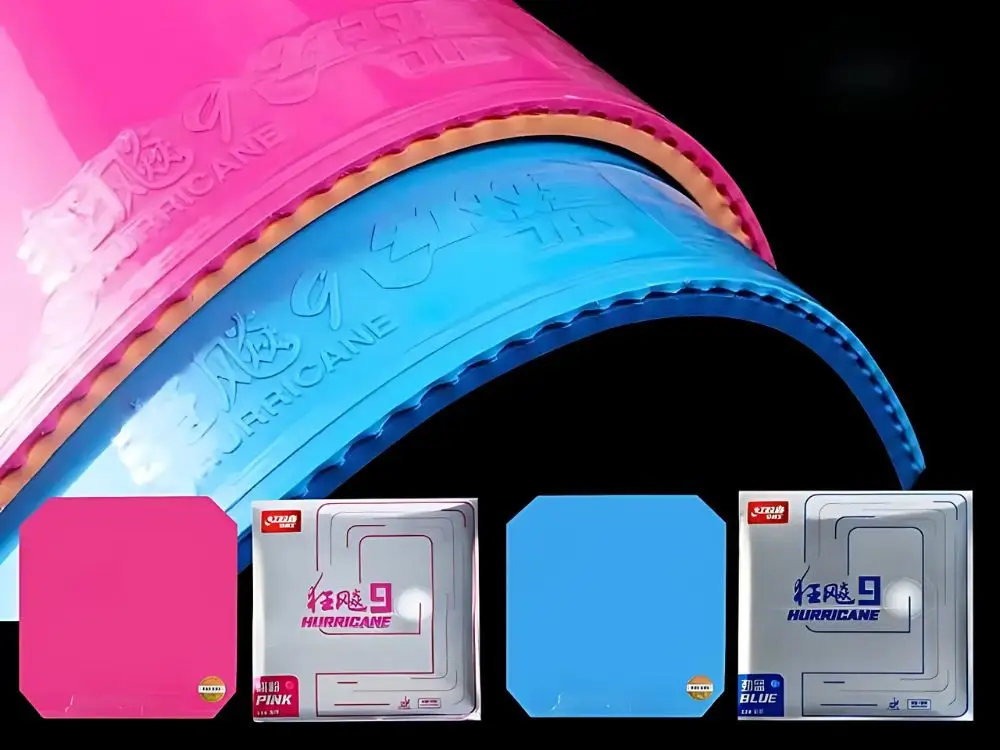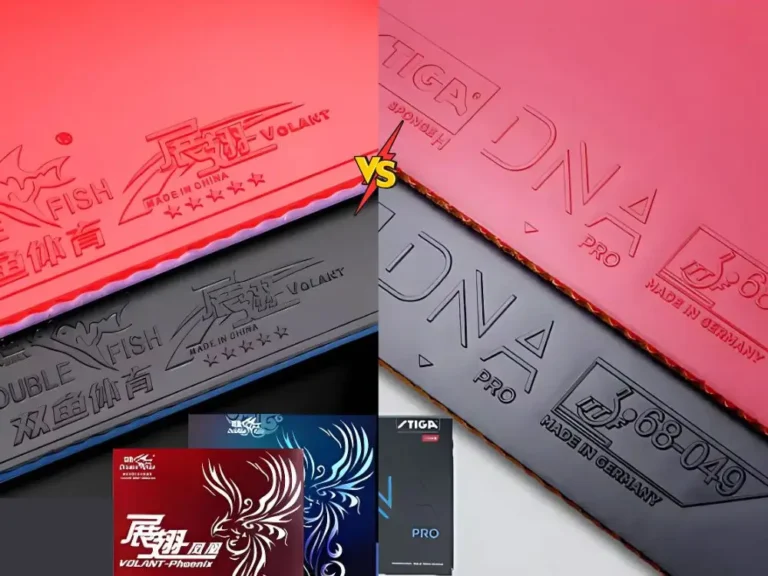Choosing the right table tennis rubber can completely transform your performance on the table. Whether you’re a spin-heavy looper, a tactical blocker, or just starting out, the rubber you select will significantly affect your control, speed, and spin. This guide will help you match the right rubber type to your playing style and goals.
Understanding Rubber Basics
Topsheet vs Sponge
The rubber consists of two key layers:
Topsheet: The outer surface that contacts the ball. It can be grippy (elastic friction) or tacky (sticky), affecting your spin potential.
Sponge: The inner foam layer beneath the topsheet. This determines the speed, bounce, and dwell time (how long the ball stays on the rubber).
Sponge Thickness
The thickness of the sponge has a big impact on playability:
OX (no sponge): Extremely thin and light. Found on many long pips for maximum disruption. Minimal bounce, perfect for chopping and blocking.
Thin (1.5mm or less): High control, low speed. Ideal for defenders and beginners.
Medium (1.7–2.0mm): Balanced speed and control. Great for all-round players.
Max (2.1mm and above): High speed and spin. Preferred by advanced attackers and loopers.
Identify Your Playstyle
All-Round
Balanced between offense and defense. You mix loops, pushes, blocks, and light smashes. You need rubber with moderate speed and reliable control.
Offensive / Looper
Your game is based on spin, speed, and powerful forehand/backhand loops. You need a fast, spinny rubber with good rebound.
Defensive / Chopper
You play from a distance and focus on disrupting opponents with chops and variation. You need slow, high-control rubber with good spin reversal.
Disruptive / Unorthodox
You rely on unusual returns and change of pace. You use pips-out or anti-spin rubbers to confuse your opponents.
Types of Rubbers & Best Use Cases
| Rubber Type | Best For | Characteristics |
|---|---|---|
| Tacky Inverted | Loopers, spin attackers | Sticky topsheet, high spin, long dwell time |
| Euro/Tensor Rubber | Speed attackers | Elastic, bouncy, fast, easy to generate spin |
| Short Pips | Fast counter hitters | Low arc, less spin-sensitive, quick attacks |
| Medium Pips | Hybrid disruptors | Balanced reversal & spin, stable blocking |
| Long Pips | Choppers, defenders | Reverses spin, unpredictable returns |
| Anti-Spin | Disruptive blockers | Kills spin, flat returns, high control |
Medium Pips: The Hybrid Option
Medium pips sit between short and long pips in structure and performance. They offer the unpredictability of pips-out rubber with more stability and offensive potential.
Why choose medium pips?
You want to block and counter but still add variation.
You need a rubber that handles spin well without being too reactive.
You play close to the table but want occasional spin attacks.
Recommended Medium Pips: Spinlord Keiler, Yinhe Pluto, 729 563
Recommended Rubbers by Playstyle
All-Round
Donic Vario, Yasaka Mark V, Xiom Vega Intro
Offensive / Looping
DHS Hurricane 3 Neo, Butterfly Tenergy 05, Xiom Omega VII Pro
Defensive / Chopper
TSP Curl P1-R, Butterfly Feint Long III, Victas Curl
Disruptive / Anti
Dr. Neubauer Anti, Lion E-Shield, Yasaka Anti Power
Medium Pips
Spinlord Keiler, Lion Rebirth, Yinhe Pluto
Tips Before You Buy
Don’t choose based on brand hype. start with what fits your style.
Beginners: go with thinner sponge or classic rubbers.
Clean and protect tacky rubbers with care.
Check for the ITTF logo if you intend to play in official competitions.
Rubber Comparison Table
| Rubber | Type | Best For | Spin | Speed | Control |
|---|---|---|---|---|---|
| Donic Vario | Inverted (tacky) | All-round | 8.5 | 7 | 8.5 |
| DHS Hurricane 3 NEO | Tacky Inverted | Looping / Forehand | 9.5 | 8 | 7 |
| Lion Rebirth | Medium Pips | BH block/counter | 6.5 | 7 | 9 |
| Lion E-Shield | Anti-spin | Disruptive blocking | 4 | 5 | 9.5 |
| Butterfly Feint Long III | Long Pips | Chopping / defense | 7 | 3.5 | 9 |
| Butterfly Tenergy 05 | Euro Tensor | Aggressive looping | 10 | 9.5 | 6.5 |
Maintenance & Rubber Lifespan
- Clean rubber after each session with water or rubber cleaner.
- Use plastic cover sheets to protect tacky rubbers.
- Replace every 6–12 months, depending on usage.
Conclusion
There’s no perfect rubber for everyone, only the one that suits you. Consider your playstyle, your level, and your goals. Start simple, experiment with purpose, and most importantly: enjoy the game.


